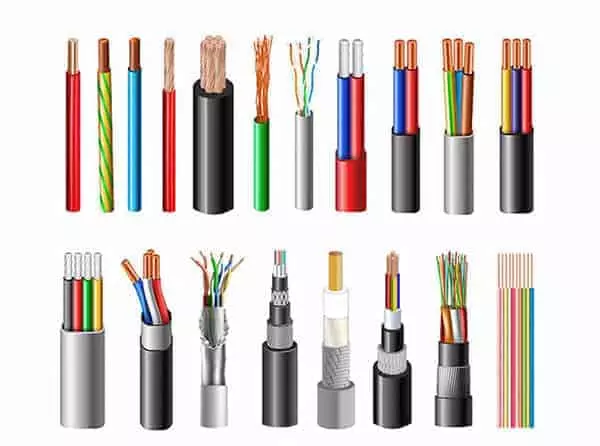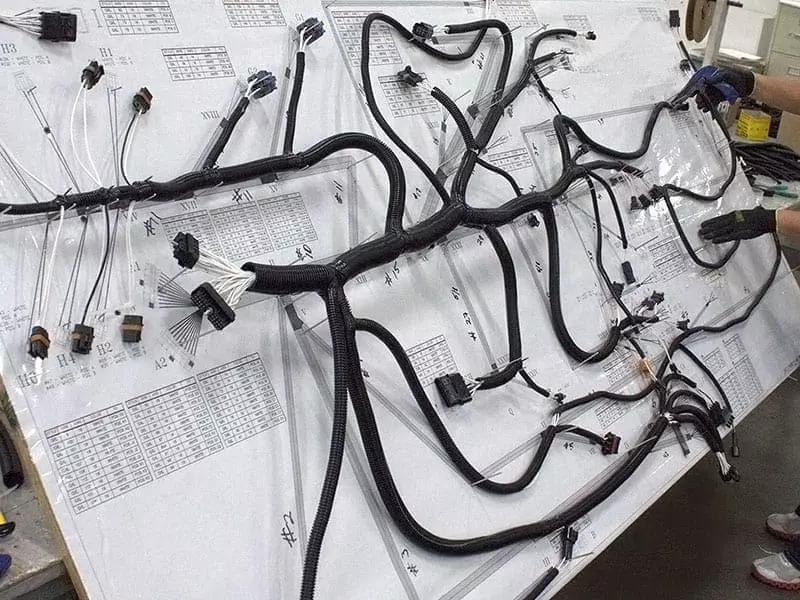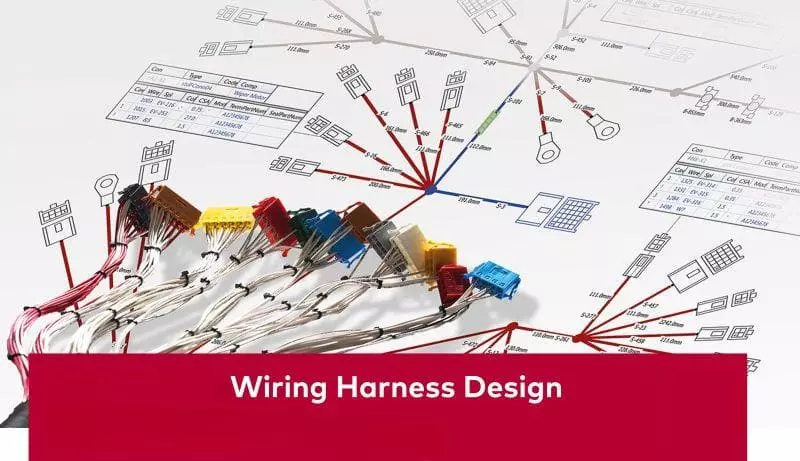In modern network communications, RJ45 connectors are ubiquitous, serving as the most common interface for Ethernet and LAN connections. Many people search “what is an RJ45 connector” to find answers: What exactly is it? Why is it so important?
This article provides a comprehensive overview of RJ45 connectors—from definition and structure to types, applications, and selection criteria—helping you quickly grasp the value of this critical interconnect device.
What is an RJ45 Connector?
RJ45 stands for Registered Jack-45, originally a standardized telecommunications interface naming convention established by the U.S. FCC. Although initially used in telephone systems, RJ45 has become the most common interface in global network communications with the widespread adoption of Ethernet.
The RJ45 connector is typically an 8-pin modular plug with a transparent or translucent plastic housing containing eight metal contacts. After crimping it to the end of a network cable, it plugs into a corresponding RJ45 port to establish a connection. Its compact design and ease of installation have made RJ45 the standard interface for Ethernet.
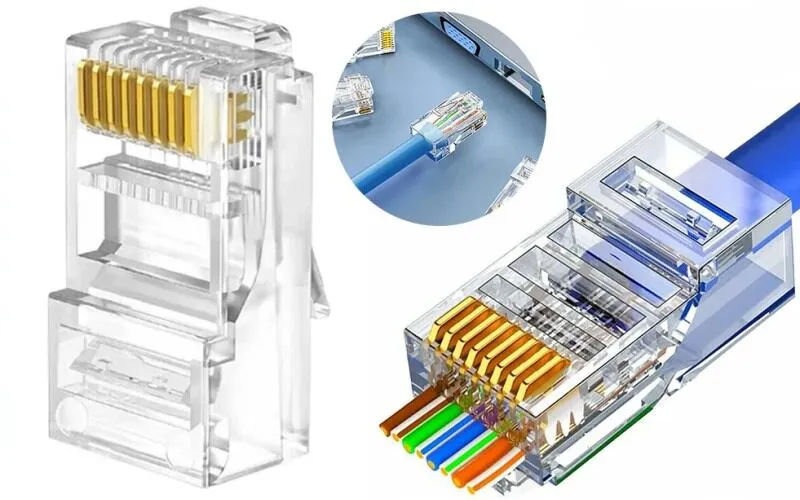
The primary function of the RJ45 connector is to serve as the terminal interface for Ethernet cables, enabling data transmission between devices. It is widely used in various categories of network cables, including Cat5e, Cat6, Cat6a, and Cat7, supporting network speeds ranging from 100Mbps to Gigabit Ethernet and even 10GbE. As an indispensable component in modern network communication infrastructure, it plays a crucial role in facilitating high-speed data transfer.
Structure and Pinout of RJ45 Connectors
Before delving into the RJ45 connector, it is essential to understand its structural composition and pin assignment, which are critical for network cabling and signal transmission.
A typical RJ45 connector consists of the following components:
- Plastic Housing: Commonly made of transparent or translucent polycarbonate, it secures internal components and facilitates visual inspection of crimping results.
- Metal Contacts: Eight gold-plated contacts arranged at the front of the plug make contact with corresponding contacts in the jack port, ensuring conductivity and wear resistance.
- Crimping Area: The rear features a cable retention groove. Using specialized tools, the twisted pair conductors are crimped onto the metal contacts, ensuring a stable electrical connection.
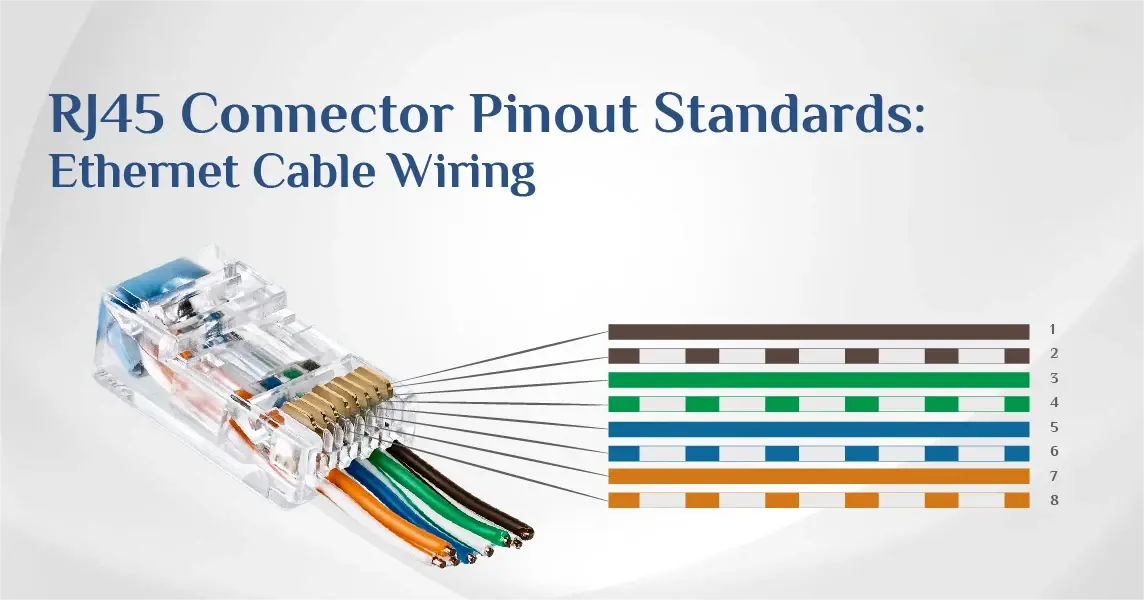
Pin Definitions
The RJ45 connector follows the 8P8C (8 Positions, 8 Contacts) standard, with each pin corresponding to a conductor. Common functional definitions are as follows:
- TX+ (Transmit Positive)
- TX− (Transmit Negative)
- RX+ (Receive Positive)
- Reserved/PoE
- Reserved/PoE
- RX− (Receive Negative)
- Reserved/PoE
- Reserved/PoE
(In different cabling standards and applications, pins 4, 5, 7, and 8 may be used for Power over Ethernet (PoE) or reserved.)
Types of RJ45 Connectors
Although the fundamental definition of an RJ45 connector is an 8P8C (8 Positions, 8 Contacts) modular interface, its actual variety is extensive due to differences in structural form, shielding levels, installation methods, and application environments. Selecting the appropriate RJ45 type directly determines the signal integrity, interference resistance, and service life of the network link.
1. Functional Roles: Plugs and Sockets
RJ45 Plug
- Also known as a “crimped connector,” typically featuring a transparent polycarbonate housing with 8 gold-plated contacts.
- Used for crimping at the end of network cables, commonly found on Cat5e/Cat6/Cat6a cables.
- Advantages: Easy installation, low cost. Disadvantages: Sensitive crimping process; excessive strand separation degrades link performance.
RJ45 Jack (Port)
- Installed on switches, routers, servers, patch panels, and similar devices.
- Internally equipped with IDC (Insulation Displacement Connectors) or PCB pins; some models integrate magnetic features (magnetic RJ45).
- In industrial and automotive applications, they are often paired with protective enclosures to achieve IP67 or higher ratings.
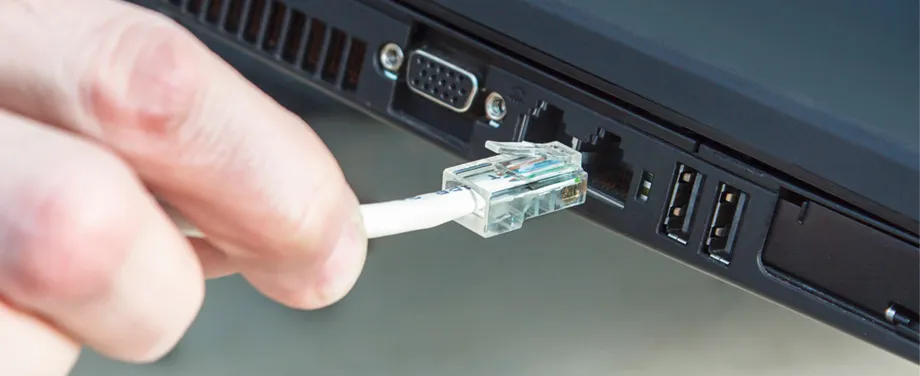
2. By Shielding Level: UTP vs. STP/FTP/S-FTP
UTP (Unshielded Twisted Pair)
- The most common type, widely used in home and office environments.
- Low cost and easy installation, but performance is limited in environments with strong electromagnetic interference (EMI).
STP/FTP (Shielded/Foiled Twisted Pair)
- Features an additional metal shield around each twisted pair or the entire cable, reducing external interference and crosstalk.
- Suitable for high-interference locations like industrial automation, server rooms, and data centers.
S/FTP (Screened Foiled Twisted Pair)
- Features individual shielding for each cable pair plus an overall shielding layer, delivering optimal performance.
- Commonly used in Cat7/Cat8 networks for 10Gbps and higher-speed transmission.
3. Classification by Installation and Termination Method
Crimp Type
- The most traditional method, using crimping pliers to crimp conductors onto contacts.
- Advantages: High versatility; Disadvantages: Requires specialized tools; poor workmanship may increase return loss.
Tool-Free / Keystone Jack
- Employs IDC (Insulation Displacement Contact) technology, enabling termination without crimping tools.
- Commonly used in patch panels and information panels for quick installation and consistent termination.
PCB Mount RJ45
- Directly soldered onto circuit boards, primarily used on network equipment motherboards.
- Some models feature integrated magnetics, providing transformer isolation, common-mode choking, and PoE support.
- Advantages: Compact layout, excellent EMI performance; Disadvantages: Higher design costs.
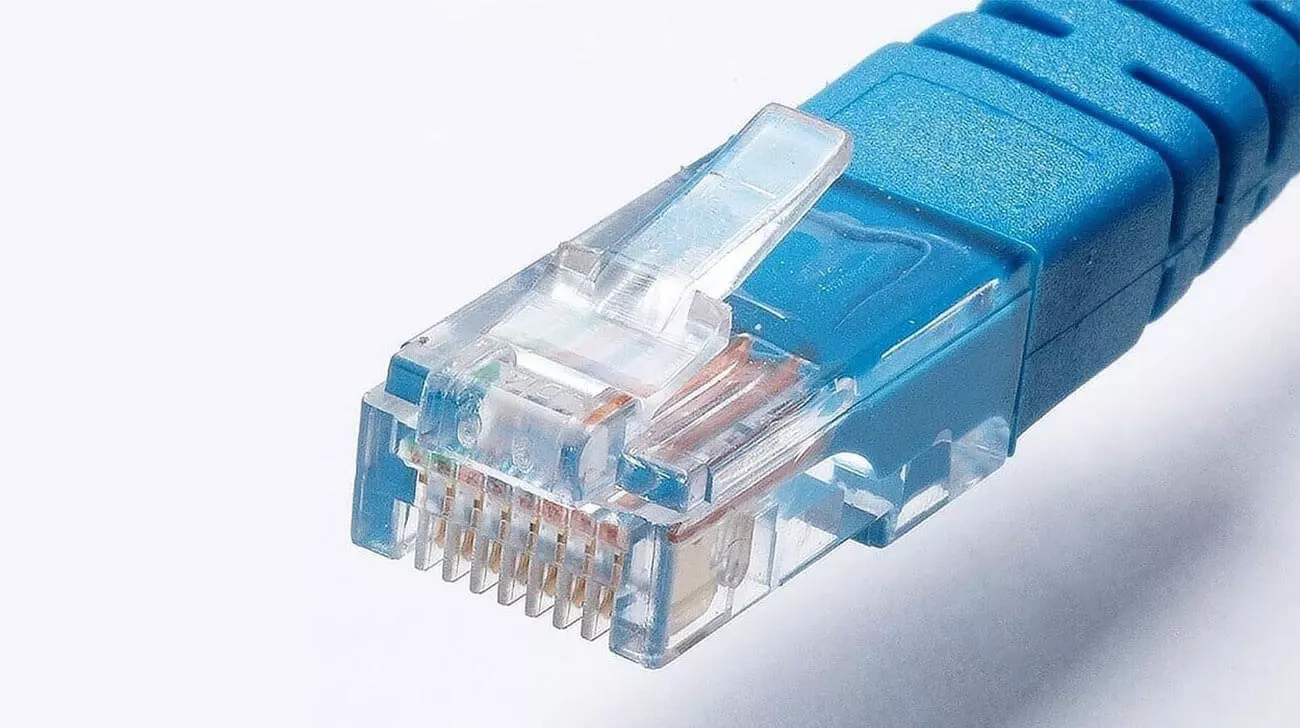
4. Classification by Application Environment
Standard RJ45
- Meets general office and home networking needs, supporting Cat5e/Cat6 speeds.
Industrial-Grade RJ45
- Features dustproof, waterproof, and shockproof capabilities, typically meeting IP67/IP68 protection ratings.
- Housed in metal or engineering plastic, commonly used in factories, railways, energy facilities, and in-vehicle Ethernet applications.
High-Performance RJ45
- Engineered for high-speed networks (10GbE and above), supporting Cat6a/Cat7/Cat8 cabling.
- Features enhanced internal shielding and contact design to minimize crosstalk (NEXT/ANEXT).
How Does RJ45 Connector Work?
The core function of an RJ45 connector is to provide a stable electrical interface for twisted-pair cables, enabling data transmission between Ethernet devices. It forms a 100Ω balanced differential channel by crimping its 8-pin contacts to the twisted conductors within the network cable, utilizing differential signal transmission to reduce external electromagnetic interference.
For Gigabit and higher speeds, RJ45 connectors typically integrate with isolation transformers to ensure signal integrity, common-mode noise suppression, and electrical isolation between devices. Additionally, some RJ45 connectors support Power over Ethernet (PoE), simultaneously transmitting data and supplying power to end devices. This dual capability makes RJ45 a critical interface in modern network communications, capable of both signal transmission and power delivery.
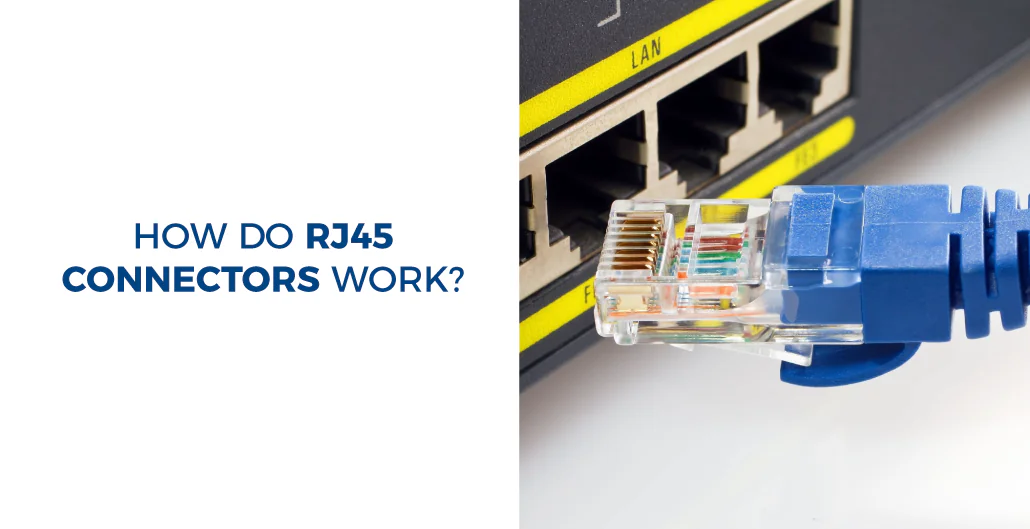
Typical Applications of RJ45 Connectors
As the core interface for Ethernet, the RJ45 connector has become a standard configuration in global network communication and data transmission equipment. Due to its stability, versatility, and scalability, its applications are extremely broad, spanning scenarios from home networks to industrial and automotive fields.
1). Network Communications and IT Infrastructure
- Routers, switches, servers: RJ45 serves as the default interface for network interconnectivity, supporting Ethernet connections ranging from 10/100 Mbps to 10GbE and beyond.
- Office and home networks: Devices such as PCs, printers, and NAS units connect to local area networks via RJ45 connectors, enabling stable wired communication.

2). Industrial Automation
- Industrial Ethernet (e.g., Profinet, EtherCAT, Modbus TCP): Enables real-time communication between PLCs, sensors, actuators, and controllers via RJ45 connectors.
- Industrial-grade RJ45: Features dustproof, waterproof, and shock-resistant designs to meet the demands of complex environments in factories, energy facilities, power plants, and rail transit systems.
3). Smart Home and Security Systems
- IP Cameras and Security Networks: Video data and PoE transmission via RJ45 simplify cabling.
- Smart Home Controllers: Gateways, smart control devices, and other components connect to the local area network using RJ45 connectors for stable interconnection.
4). Automotive and In-Vehicle Networking
- In-Vehicle Ethernet: Next-generation smart vehicles utilize RJ45-based Ethernet interfaces for ADAS, infotainment systems, and camera data transmission.
- Compared to traditional CAN, it offers higher bus speeds and supports high-definition video and large-data-volume transmission.
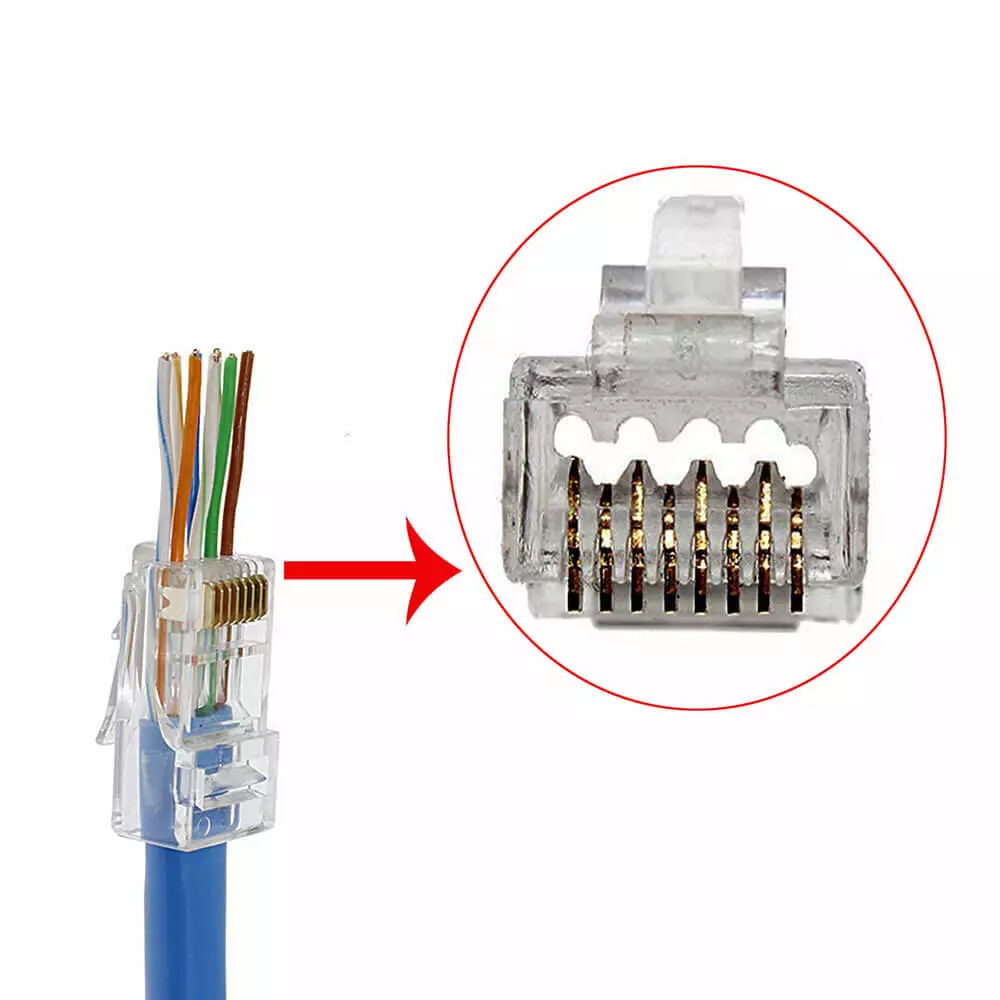
5). Data Centers and Cloud Computing
- High-Speed Transmission: In rack-mounted servers, storage systems, and switches, RJ45 connectors remain one of the most commonly used access methods for 10 Gigabit Ethernet (10GbE).
- Compatibility and Flexibility: Compared to fiber optics, RJ45 offers lower costs and simpler cabling, making it suitable for medium-to-short-distance network connections.
How to Choose the Right RJ45 Connector?
In practical applications, selecting the correct RJ45 connector is crucial for ensuring the stability and long-term reliability of network links. An unsuitable connector may result in signal attenuation, increased interference, or even link disruption.
1. Bandwidth and Category Matching
The categories of network cables—such as Cat5e, Cat6, Cat6a, Cat7, and Cat8—determine the supported bandwidth and data rates.
For example:
- Cat5e → 1Gbps
- Cat6 → 1Gbps/10Gbps (short distances)
- Cat6a → 10Gbps (100m)
- Cat7/8 → Higher speeds, enhanced shielding performance
The selected RJ45 connector must match the cable category; otherwise, the cable’s performance cannot be fully realized.

2. Shielding and Environmental Adaptability
- UTP (Unshielded Twisted Pair): Suitable for standard home and office networks.
- STP/FTP (Shielded Twisted Pair): Essential in environments with high electromagnetic interference (EMI), such as industrial control rooms, server rooms, and data centers.
- Industrial-Grade RJ45: Features IP67/IP68 protection ratings, withstanding dust, moisture, and mechanical impacts. Suitable for harsh environments like factories, railways, and in-vehicle Ethernet.
3. Installation and Termination Methods
- Crimp Type: Requires specialized crimping tools, commonly used for field installations.
- Tool-free / Keystone Jack: Enables quick termination, suitable for bulk engineering projects and patch panel applications.
- PCB Mount RJ45: Commonly found on routers, switches, and server motherboards, with some incorporating magnetic (MagJack) features.
4. Service Life and Mechanical Properties
- The thickness of the metal contact plating affects the RJ45 insertion/removal cycle life (typically 750 cycles or more).
- High-quality RJ45 connectors maintain long-term contact stability and minimize contact resistance variation.
5. Compliance Certifications and Standards
- Quality Systems: ISO 9001, IATF 16949 (Automotive), ISO 13485 (Medical)
- Safety and Environmental: UL, RoHS, REACH
- Communication Standards: Compliant with IEEE 802.3 Ethernet specifications
FAQs
Q1: Are RJ45 and Ethernet the same thing?
A1: No. The RJ45 connector is a physical interface (8P8C plug/jack), while Ethernet is a communication standard and protocol. RJ45 is commonly used for Ethernet physical layer connections, but the two are not equivalent.
Q2: What is the difference between RJ45 and RJ11?
A2: Both RJ45 and RJ11 are modular connectors, but RJ45 has 8 contacts (8P8C) and is primarily used for network communication. RJ11 has 4 or 6 contacts, is commonly found in telephone interfaces, and is smaller in size than RJ45. An RJ45 plug cannot be inserted into an RJ11 jack, and vice versa.
Q3: Why do some RJ45 connectors have metal shielding while others do not?
A3: RJ45 connectors with metal shielding belong to the shielded type (STP/FTP), which effectively reduces electromagnetic interference and is suitable for industrial and data center environments. Unshielded types (UTP) are lower in cost and are suitable for home and office networks.
Conclusion
Through this article, you should now have a comprehensive understanding of what an RJ45 connector is. The RJ45 connector is not only the most common physical interface for Ethernet but also an indispensable core component in modern network communications, industrial automation, smart homes, and in-vehicle Ethernet. From its structure and types to application and selection criteria, expertise in RJ45 is crucial for engineers and procurement personnel to ensure network performance and reliability.
In practical projects, selecting the appropriate RJ45 connector requires comprehensive consideration of multiple factors, including bandwidth matching, shielding requirements, installation methods, environmental adaptability, and certification compliance. Correct selection ensures stable and efficient operation of network links throughout their entire lifecycle.
As a trusted interconnect solutions provider, Linkwings not only offers RJ45 products compliant with international standards but also delivers customized solutions and full-process technical support. If you’re seeking reliable RJ45 connector solutions, contact Linkwings today. We’ll provide you with the optimal choice.
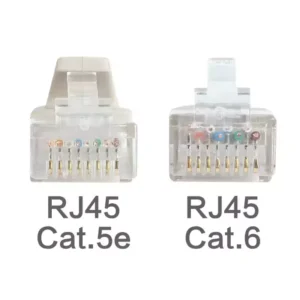
What is the Difference Between Cat5e and Cat6 RJ45 Connectors?
Table of Contents Wh
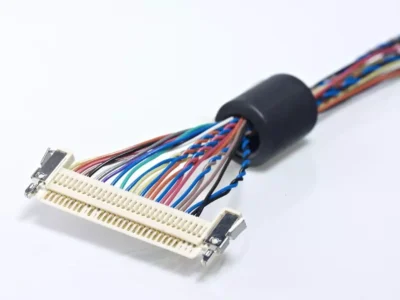
Top 10 LVDS Cable Manufacturers in World 2026
Table of Contents In

How to Check Lvds Cable?
Table of Contents In
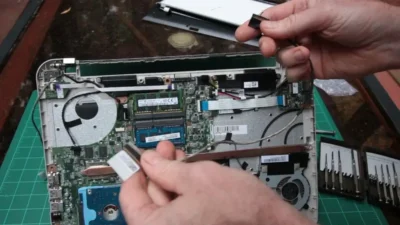
How to Remove Lvds Cable?
Table of Contents Du

